How to Extract Dandelion Polysaccharide?
Dandelion, a perennial herb in the Asteraceae family, is widely distributed and abundant in resources[1]. Dandelion is rich in polysaccharides, which can be obtained from its roots, leaves, and flowers, with the highest content in the rhizomes[2]. Dandelion polysaccharides include glucose, fructose, sucrose, inulin, etc., and the polysaccharide content accounts for 30% to 50% of the dry weight of the dandelion. Polysaccharides are an important class of physiologically active substances with a variety of pharmacological functions. For example, dandelion polysaccharides have antibacterial, antioxidant, hypoglycemic, hypolipidemic, and immunostimulatory functions. In addition, polysaccharide extraction is an important basis for studying the biological activity of polysaccharides. Currently, there are many known methods for polysaccharide extraction, such as the hydroalcoholic method, ultrasonic-assisted extraction, ultrafiltration, enzymatic hydrolysis, acid extraction, and gel column chromatography [3]. This paper reviews the biological activity, extraction process and application progress of dandelion polysaccharides, with the aim of providing a reference for the research of dandelion polysaccharides.
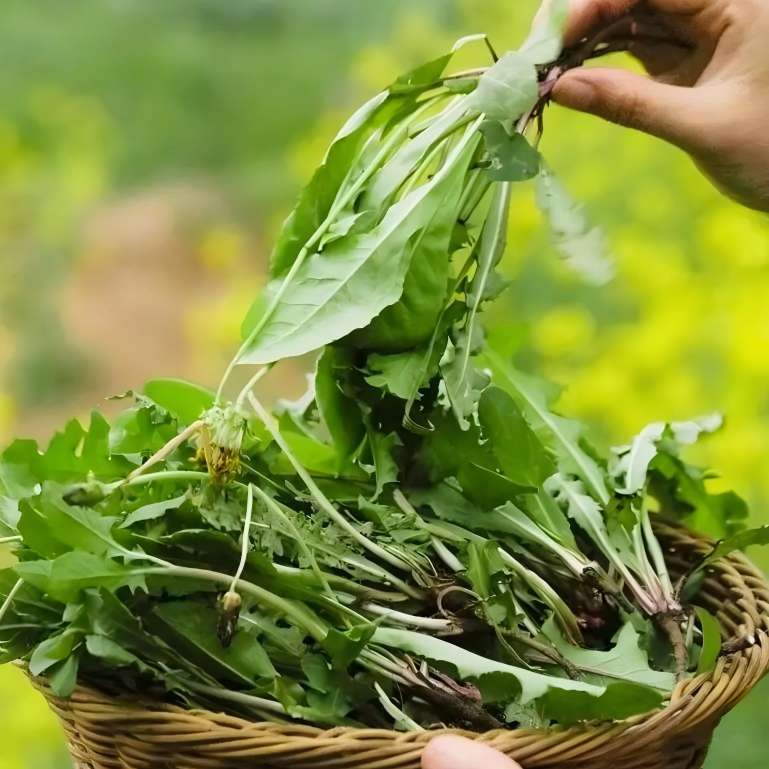
1 Extraction process of dandelion polysaccharides
At present, the commonly used extraction methods for dandelion polysaccharides include ultrasonic-assisted extraction, enzymatic hydrolysis, microwave extraction, etc.
1.1 Ultrasonic-assisted extraction
When ultrasonic waves are used to extract active substances, the cavitation effect that occurs when the air pressure reaches a certain value causes the bubbles in the solution to vibrate, thereby destroying the cells of the raw material and dissolving the polysaccharides [4-5]. The extraction conditions of the ultrasonic-assisted extraction method are mild, the equipment is easy to obtain, no other harmful substances are added, and the extraction efficiency is high [6]. However, the power of the ultrasonic waves, the liquid-to-material ratio, the temperature, and the extraction time all have a significant effect on the yield of polysaccharides.
Among them, there have been many studies on optimizing the ultrasonic extraction process of dandelion polysaccharides. Zhang Jing et al. [7] determined that the optimal process parameters for extracting dandelion root polysaccharides were a liquid-to-solid ratio of 1:40 (g/mL), an extraction temperature of 80 °C, and two extractions within 3 h. At this time, the polysaccharide yield of the raw material can reach 8.945%. Guo Huijing [8] used ultrasonic-assisted extraction to extract polysaccharides from the whole herb of wild dandelion in Xinjiang. Under the conditions of ultrasonic treatment for 63 min, temperature 73 °C, power 120 W, and liquid-to-solid ratio 1:25 (g/mL), the polysaccharide yield can reach 14.27%. Compared with hot water extraction, ultrasonic-assisted extraction can shorten the extraction time and increase the yield.
1.2 Enzyme hydrolysis
The catalytic action of enzymes breaks down raw materials. This mode of action is direct and the extraction time is short. In enzyme hydrolysis, solid enzymes have the advantages of low energy consumption, environmental friendliness and low cost compared with liquid enzymes, but research is rare. Zhao Yang et al. [9] used single-factor experiments combined with Box-Behnken response surface analysis to investigate the effect of the solid enzyme decomposition process on the content of dandelion polysaccharides.
The optimal solid enzyme decomposition process for dandelion was found to be pectinase enzyme decomposition of dandelion, with 10% bran as the auxiliary material, an enzyme decomposition time of 12.3 h, an enzyme decomposition temperature of 57.6 °C, enzyme addition amount 1532 U/g, moisture content 55%, under these conditions the highest yield of dandelion polysaccharides was 218.21 mg/g. Chen et al. [10] compared the extraction of dandelion polysaccharides by enzymatic hydrolysis and ultrasonic-assisted extraction. The results showed that when the liquid-to-material ratio was 1:15 (g/mL), the extraction time was 2 h, extraction temperature 65 ℃, the extraction effect of ultrasonic-assisted extraction method is better than that of enzymatic method. When dandelion polysaccharides are extracted using enzymatic method, the internal structure of dandelion is intact, which makes it difficult to extract, so the extraction rate is not high. However, compared with hot water extraction method, enzymatic method saves reaction time and reduces resource consumption.
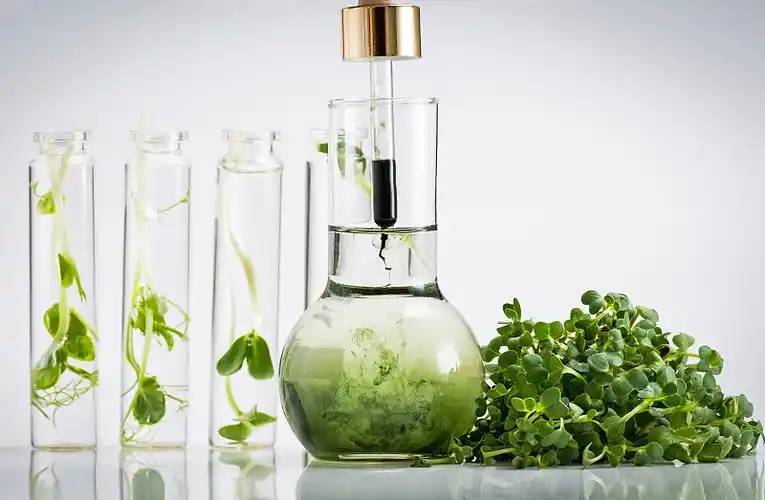
1.3 Microwave extraction method
Microwaves can break the cell walls of plant materials, causing the polysaccharides inside the cells to precipitate. Microwave extraction technology can be used to assist in the extraction of dandelion polysaccharides [11]. Hao Yanshuang et al. [12] used microwave extraction technology to extract dandelion polysaccharides. The results showed that compared with the conventional boiling method, microwave extraction technology resulted in significant improvements in the content, purity, and extraction time of dandelion polysaccharides. Guo Xijuan et al. [13] optimized the microwave extraction process parameters using a response surface test with the yield of dandelion polysaccharides as the index. Treating the raw material with a material-to-liquid ratio of 1:17 (g/mL) for 14 minutes can achieve an extraction rate of up to 74.34%.
2 Biological activity of dandelion polysaccharides
2.1 Regulates the activity of intestinal flora
Many natural plant polysaccharides have a good regulatory effect on intestinal flora. It has been found that dandelion polysaccharides also have a regulatory effect on intestinal flora, but there is little literature reporting this. Shi Dan et al. [14] used dandelion polysaccharides to treat intestinal flora imbalance in mice, compared the therapeutic effect with that of the Livzon Intestinal Care treatment, and explored the effect of dandelion polysaccharides on regulating intestinal flora disorders. By establishing a model of lincomycin-induced intestinal mucosal damage in mice and intervening at the animal level, it was found that dandelion polysaccharides have a certain repair effect on lincomycin-induced intestinal mucosal damage in mice. Zhou Yani et al. [15] selected mice with ulcerative colitis and dysbiosis to explore the role of dandelion polysaccharides in intestinal regulation. The content of uric acid and nitric oxide in mouse serum, and the expression of interleukin and tumor necrosis factor in serum were measured using enzyme-linked immunosorbent assay. The study found that after dandelion polysaccharides were used, the microbial imbalance in the mouse intestine was improved, and it was believed that dandelion polysaccharides have the effect of regulating the intestinal flora.
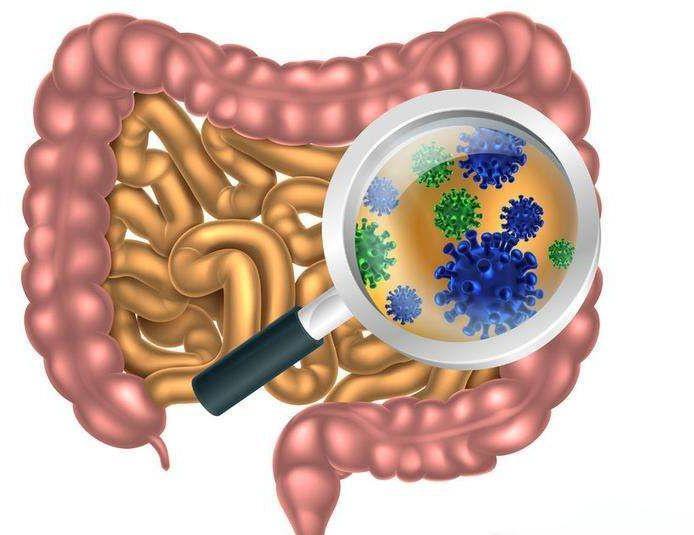
2.2 Antibacterial activity
Dandelion polysaccharides can inhibit the activity of bacteria such as Escherichia coli and Salmonella, and also inhibit bacterial growth. Wang [16] used cellulase to assist in the extraction of dandelion water-soluble polysaccharides and found that when the total dandelion sugar content was 95.6% (by mass) and the concentration was 100 mg/mL, it had a high inhibitory effect on Escherichia coli, Bacillus subtilis and Staphylococcus aureus. Lin et al. [17] chemically modified the water-soluble dandelion polysaccharide to obtain a carboxymethylated derivative, and found that after treating Listeria monocytogenes with 10 mg/mL of the polysaccharide and its derivatives, the number of Listeria monocytogenes was reduced. Subsequently, dandelion polysaccharides and their carboxymethylated derivatives were incorporated into polyethylene oxide (PEO) nanofiber matrices to prepare nanofibers with antibacterial properties. Experimental demonstrations have found that nanofibers exhibit good antibacterial effects against Listeria monocytogenes, and the antibacterial effects of derivative nanofibers are even better.
Luo Qinqi [18] used titanium dioxide nanotubes to load dandelion polysaccharides. Anhydrous ethanol/dimethyl sulfoxide (DMSO) was used as an organic solvent to dissolve dandelion polysaccharides. The polysaccharides were loaded onto an anodically oxidized titanium sheet by physical adsorption, and Porphyromonas gingivalis was cultured on the surface of the titanium sheet for an in vitro antibacterial test to to explore their effect on the growth of Porphyromonas gingivalis. After staining with Trypan blue, the distribution of bacteria was observed under a microscope. It was found that in the test group loaded with dandelion polysaccharides, the number of dead bacteria was higher than that in the control group.
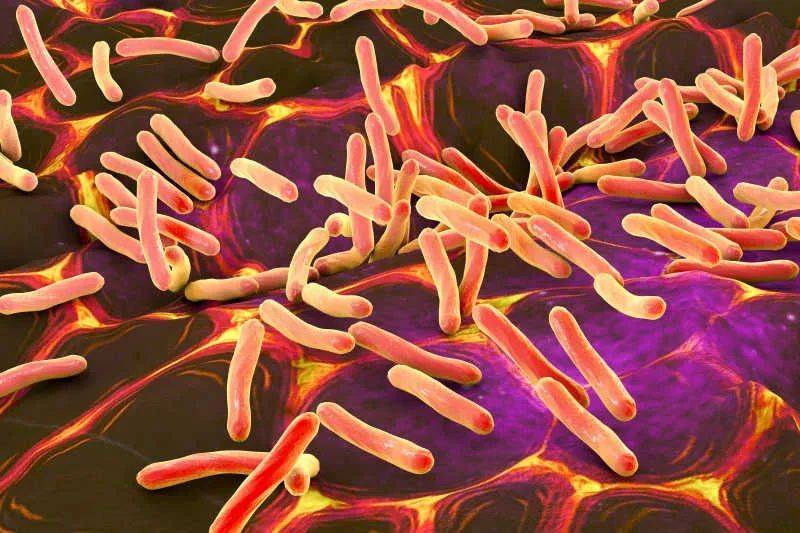
Therefore, it is believed that the active coating loaded with dandelion polysaccharides on titanium dioxide can inhibit the growth of P. gingivalis and thus play an antibacterial role. Li Shuang et al. [19] used purified dandelion polysaccharides as the control group and acetylated dandelion polysaccharides as the test group to carry out in vitro antibacterial tests on Escherichia coli and Staphylococcus aureus. The study found that the antibacterial activity of acetylated dandelion polysaccharides was superior to that of purified dandelion polysaccharides, and that the higher the concentration of polysaccharides, the stronger the antibacterial activity. This is consistent with the finding by Lin et al. [17] that the derivatives have stronger antibacterial activity.
2.3 Antitumor activity
Plant polysaccharides are also widely used in the field of tumor suppression and have a good inhibitory effect on the growth of tumors and cancer cells [20-23]. Chen et al. [10] extracted a new neutral polysaccharide from dandelion, and measured its total sugar content to be 90.16%. By evaluating the inhibitory effect of dandelion neutral polysaccharide on liver cancer cells, it was found that dandelion neutral polysaccharide has antitumor activity. Ren et al. [24] found that dandelion polysaccharides exhibit anti-tumor activity both in vivo and in vitro. The results of wound healing and Transwell cell invasion experiments in vitro showed that dandelion polysaccharides can inhibit the activity of human umbilical vein endothelial cells (HUVECs); protein blotting and immunofluorescence staining results showed that dandelion polysaccharides can inhibit hypoxia-inducible factor. Therefore, dandelion polysaccharides exert anti-tumor activity in vivo and in vitro by regulating the expression of vascular endothelial growth factor/hypoxia-inducible factor 1α (VEGF/HIF-1α).
Li et al. [25] first discovered that dandelion polysaccharides can maintain iron homeostasis and inhibit tumor cell proliferation. When iron regulatory protein is abnormally expressed in human liver cancer cells, dandelion polysaccharides inhibit the proliferation of liver cancer and breast cancer cells by inhibiting the expression of iron regulatory protein. Zhang et al. [26] isolated inulin fructan from dandelion polysaccharides, which has moderate antitumor activity, to enhance the antitumor activity of inulin fructan. In addition, in vitro anti-tumor and zebrafish in vivo anti-tumor tests were carried out using zebrafish transplanted with tumors. The results showed that inulin fructan selenium nanoparticles can inhibit the proliferation and migration of tumor cells in zebrafish, and are more stable and have enhanced anti-tumor activity than inulin particles.
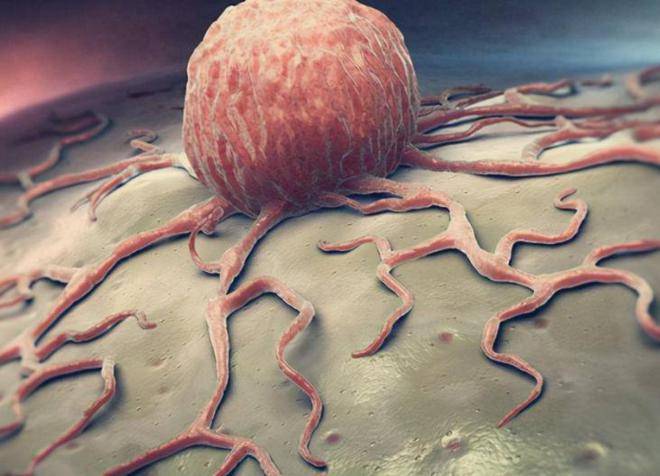
2.4 Enhances immune function and anti-inflammatory activity
In recent years, a number of studies have found that adding dandelion polysaccharides to feed can effectively enhance the immune function of experimental animals such as mice, chicks, and carp, indirectly indicating that dandelion polysaccharides have a strengthening effect on human immune function. Gao Huijie et al. [27] studied the effect of dandelion polysaccharides on the immune function of mice and found that it can enhance the immune function of mice. Four groups of animals were used in the experiment: one group was given saline, the saline group; the other group was the normal control group; the other two groups were given the same dose of cyclophosphamide and dandelion polysaccharide, the cyclophosphamide group and the dandelion polysaccharide group, respectively. Every day, saline and cyclophosphamide were instilled into the saline group and cyclophosphamide group, respectively, and 80 mg/kg dandelion polysaccharides were instilled into the dandelion polysaccharide group. After 8 days, the strength of the mice's immune response was tested, and the results showed that the expression level of tumor necrosis factor (TNF-α) in the mice's serum was increased. Wang et al. [28] found that dandelion extract can significantly improve the immune level of broiler chickens by comparing the immune levels of broiler chickens fed a normal diet, a diet containing astragalus polysaccharides, and a diet containing dandelion extract. Ren et al. [29] assessed the level of immune enhancement by observing the spleen index, spleen germinal center response and T cell activation index, to evaluate its ability to enhance immunity.
The results showed that dandelion polysaccharides have a boosting effect on the immune function of mice. Yu et al. [30] used the common carp feed as the base and found that with the increase of dandelion polysaccharide concentration (0.0–2.0 g/kg), the immune enzyme activity and immune factor content of common carp were significantly improved. The results showed that dandelion polysaccharides can improve the immune function of common carp and can be further applied to aquatic feeds. In addition, it is speculated that dandelion polysaccharides can enhance the function of antibody-secreting cells, promote the secretion of cellular immune substances, and enhance the body's immune function. However, the mechanism by which dandelion polysaccharides increase immune enzyme activity and immune factor content has not been clearly explained. Zhao Yang [31] prepared crude dandelion polysaccharides and divided broiler chickens into three groups. The broiler chickens in the control group were fed a basal diet, two test groups were added to the basic diet with 1000 mg/kg of unenzymatically digested dandelion products and 1000 mg/kg of enzymatically digested dandelion products, respectively, to study the effect of feeding dandelion enzymates for 42 days on the production performance and immunity of broilers. The results showed that adding crude dandelion polysaccharides to broiler diets can improve the immune function of broilers.
In recent years, research on the anti-inflammatory activity of plant polysaccharides has focused mainly on pharmaceutically edible polysaccharides [32]. Dandelion polysaccharides, as a pharmaceutically edible polysaccharide with multiple physiological activities, have received widespread attention. Zhou Yani et al. [15] established a mouse model of ulcerative colitis, with 40 mice as the research subjects. Under the same dose of lincomycin, the control group and model group were given the same dose of saline, the Lizhu Changle group was given the same dose concentration, and the dandelion polysaccharide group was given the same dose of treatment. By measuring the inflammatory factors in mice, it was found that the level of inflammatory factors in the dandelion polysaccharide group was significantly reduced, and the level of anti-inflammatory factors was increased, indicating that dandelion polysaccharides have a certain anti-inflammatory effect.
2.5 Antioxidant activity
The antioxidant activity of plant polysaccharides is reflected in two ways. On the one hand, plant polysaccharides can directly scavenge hydroxyl radicals and inhibit lipid oxidation. Dandelion polysaccharides can effectively scavenge free radicals and achieve good antioxidant effects [33]. Guo Huijing et al. [34] found that dandelion polysaccharides can significantly enhance the body's antioxidant capacity. In previous studies, the scavenging capacity of dandelion polysaccharides for free radicals and superoxide dismutase activity were determined, and it was found that the reducing capacity of dandelion polysaccharides was positively correlated with its concentration.
On the other hand, plant polysaccharides can exert an antioxidant effect by increasing the activity of antioxidant enzymes, cooperating with the metal ions required for oxidation, and reducing the content of malondialdehyde (MDA) to improve total antioxidant capacity [35]. Kang Wenjin et al. [36] found that after mice were administered dandelion polysaccharides, the levels of superoxide dismutase (SOD) and glutathione peroxidase (GSH-Px) activity, and total antioxidant capacity were significantly increased, and malondialdehyde (MDA) content was significantly decreased. The expression of various superoxide dismutase genes in mouse liver tissue was also significantly increased. This is consistent with the research results of Zhao et al. [37], who found that dandelion polysaccharides increased the activity of antioxidant enzymes and promoted the expression of antioxidant-related genes in Asian toads exposed to hexavalent chromium for 28 days by feeding a daily diet supplemented with dandelion polysaccharides, and inhibited the production of malondialdehyde in their bodies.
2.6 Regulates blood glucose activity
Diabetes is a metabolic disease caused by the interaction of multiple risk factors, with elevated blood glucose as the main clinical manifestation [38]. Plant polysaccharides have the biological activity of lowering blood glucose, mainly through the following pathways:
1) Inhibiting the activation of c-Jun N-terminal kinase (JNK) to reduce the apoptosis of pancreatic islet cells, thereby reducing blood glucose in the body; 2) inhibiting the apoptosis of pancreatic β cells, protecting and repairing pancreatic β cells to promote insulin secretion; 3) inhibiting the activity of amylase and glucosidase in the body and inhibiting the conversion of polysaccharides into absorbable monosaccharides [39]. Guo Huijing et al. [40] purified the extracted crude polysaccharides and measured the hypoglycemic activity of dandelion polysaccharides by in vitro inhibition of α-glucosidase activity as an index. The results showed that the inhibition of glucosidase by the purified polysaccharide was stronger than before purification, and the inhibition ability increased with the increase of polysaccharide concentration. Wu et al. [41] found that dandelion leaf polysaccharides have the effect of inhibiting α-glucosidase and can effectively regulate blood glucose. Hou Liran et al. [42] found that dandelion polysaccharides have the function of lowering blood glucose in diabetic mice.
3. Application of dandelion polysaccharides in food
Dandelion polysaccharides are currently mostly used in feed and pharmaceuticals, and most of those used in food are crude polysaccharide extracts[43]. There has been little research on the application of dandelion polysaccharides in food in China, and most of it has been based on preliminary processing. Xiong Yaqin et al. [44] used active ingredients extracted from dandelion to make a compound beverage with Ganoderma lucidum and germinated brown rice. The compound beverage has health-care functions and meets the quality and taste requirements of functional beverages, but its specific efficacy has not been verified.
Xing Shuang et al. [45] used the dandelion polysaccharide content as an indicator to design and produce a sticky rice cake containing dandelion polysaccharides, and determined the optimal process conditions for the extraction time, addition amount and production of sticky rice cakes. Ning Le et al. [5] used response surface design to optimize the extraction process of dandelion polysaccharides, and based on the extracted dandelion polysaccharides, designed a dandelion polysaccharide beverage. Liu Shanshan [46] used dandelion as a raw material and enzymatically treated dandelion to obtain a polysaccharide yield of 32.97%, a total flavonoid yield of 15.03%, antioxidant capacity of 92.31%. A coffee-flavored drink prepared using the enzymatic solution not only has a coffee flavor, but also a unique dandelion flavor, broadening the utilization of dandelions and the development of the industry of deep processing of dandelion ingredients.
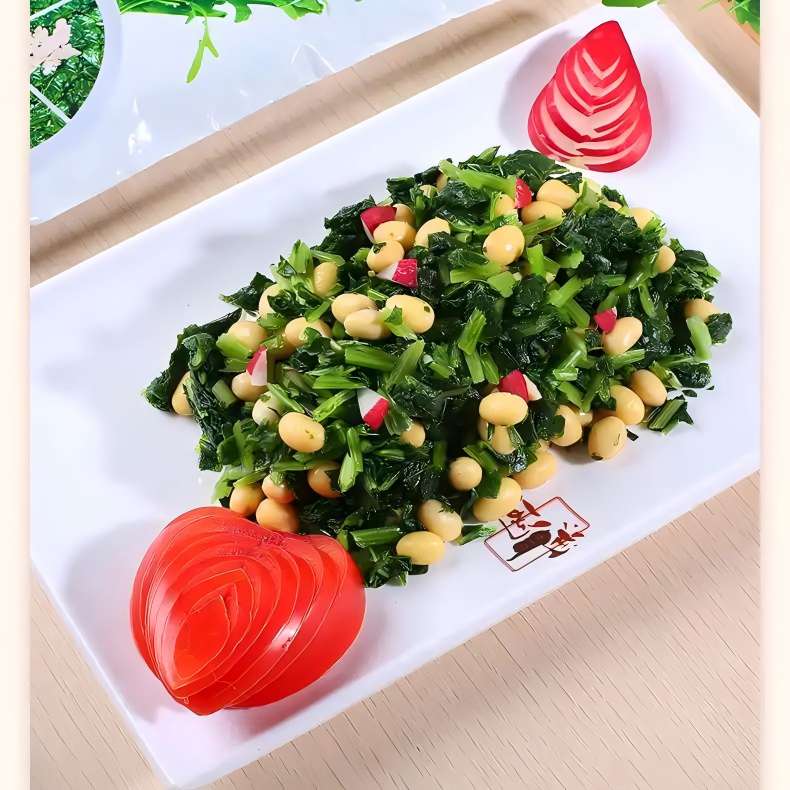
In recent years, polysaccharide oral liquid products with health benefits have been continuously launched, and dandelion polysaccharides can also be used in these products due to their rich biological activity and the advantages of being easy to obtain. However, there has been little research on dandelion polysaccharide health foods, and the development of dandelion polysaccharide deep processing products has broad development prospects. Cui et al. [47] found that the essential oil extracted from Litsea cubeba is unstable and volatile, and its antibacterial effect against Staphylococcus aureus is not good. However, using dandelion polysaccharide as a carrier, the essential oil was encapsulated in the cavity of β-cyclodextrin by ultrasound, and then electrostatically spun to load it onto the nanofibers of dandelion polysaccharide. It was found that the antibacterial effect of the essential oil was enhanced, and it had a longer-lasting effect.
This shows that dandelion polysaccharide has the potential to be used as a carrier material and can be used in combination with other effective antibacterial substances. In addition, the polysaccharides in dandelion extracts can be used in the development of food preservation materials. Zhang et al. [48] used an alcohol precipitation method to extract the active ingredients of dandelion, and then compounded them with chitosan to make a film material. The film was applied to green peppers, and it was found that the loss of moisture in the peppers was reduced, effectively reducing the loss of nutrients in the peppers. The compound of dandelion and chitosan significantly improved the preservation effect of chitosan.
4 Conclusion
Although the extraction process of dandelion polysaccharides is constantly being optimized, it is still mainly based on a single method or ultrasonic-assisted extraction. The extraction process of enzymatic hydrolysis and the extraction of other processes still need to be further explored and optimized.
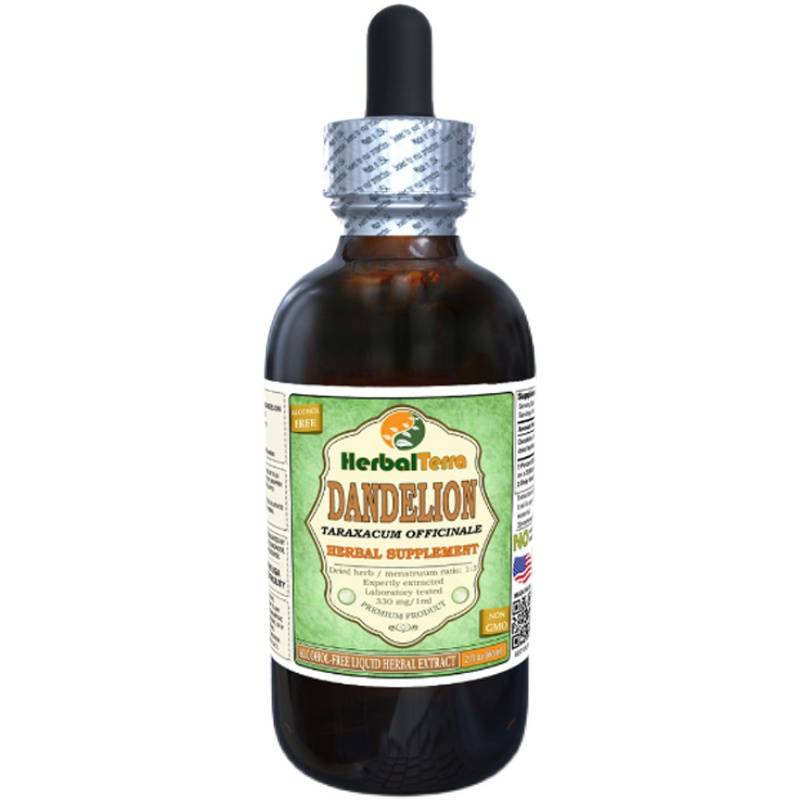
In recent years, foods containing dandelion polysaccharides have been developed, but it has not been explored whether foods containing dandelion polysaccharides can function in the body. Therefore, further research is needed to confirm the physiological activity they exert in the body. The above research on dandelion polysaccharides in the food industry shows that dandelion polysaccharides are not only of high value in foods and feeds, but also have broad research prospects in food preservation materials and antibacterial materials.
Reference:
[1] LIU Weixi, CHEN Shuai, LIU Lei, et al. Research progress on dan- delion polysaccharides[J]. Food Research and Development, 2020, 41(10): 214-219.
[2] ZHANG Xiaojie, CONG Lijia, FAN Hongyan. Progress in pharma- cological effect of dandelion polysaccharide[J]. Journal of Jilin Medical College, 2015, 36(5): 378-381.
[3] LIU Ting, ZHANG Jixiu, LI Xianzhe, et al. The progress on devel- opment and utilization of dandelion[J]. Journal of Shenyang Phar- maceutical University, 2019, 36(5): 450-458.
[4] ZHUANG Yue. Practical pharmaceutical preparation technology[M]. Beijing: People ’s Medical Publishing House, 1999.
[5] NING Yue, ZHENG Nan, CAI Jianyan, et al. Study on extraction of polysaccharide from dandelion and development of its beverage[J]. Cereals & Oils, 2021, 34(12): 86-89, 94.
[6] PENG Chuanyou, LIAO Limin. Study on optimization of ultrasonic extraction of polysaccharides from loquat leaf by center combina- tion design[J]. China Food Additives, 2021, 32(12): 9-15.
[7] ZHANG Jing, WEN Nuan, LIU Yangyang, et al. Extraction of poly- saccharide from the dandelion root and development of its beverage [J]. Farm Products Processing, 2018(1): 13-17.
[8] GUO Huijing. Extraction, isolation, purification, characterization and its biological activity of polysaccharide from Taraxacum mon- golicum[D].Shihezi: Shihezi University, 2019.
[9] ZHAO Yang, LIU Na, WANG Yuan, et al. Optimization of enzy- molysis assisted extraction process of dandelion polysaccharide and its monosaccharide composition analysis[J]. Science and Tech-nology of Food Industry, 2021, 42(16): 199-206.
[10] CHEN X Y, JI H Y, ZHANG C F, et al. Optimization of extraction process from Taraxacum officinale polysaccharide and its purifica- tion, structural characterization, antioxidant and anti-tumor activ- ity[J]. Journal of Food Measurement and Characterization, 2020, 14(1): 194-206.
[11] MA Hongmei. Extraction of polysaccharide from Txraxacum tibeta- num Hand. - mazz and the prelimminary study of immunnity test about nano preparation of polysaccharide[D]. Chengdu: Southwest Jiaotong University, 2013.
[12] HAO Yanshuang, GENG Meiying, FENG Zhihua, et al. Microwave extraction technology of dandelion polysaccharide[J]. Chinese Jour- nal of Veterinary Medicine, 2009, 45(9): 62-63.
[13] GUO Xijuan, MA Ping, LIU Yuanyang. Optimization on microwave- assisted extraction of dandelion polysaccharide by response surface methodology[J]. Journal of Heilongjiang Bayi Agricultural Univer- sity, 2014, 26(3): 40-44, 57.
[14] SHI Dan, ZHANG Yu. Investigation of regulation from dandelion polysaccharides on mouse intestinal microecology[J]. Progress in Microbiology and Immunology, 2016, 44(3): 49-53.
[15] ZHOU Yani, GUO Yaodong, LIU Chengfei, et al. Regulation and anti-inflammatory effects of dandelion polysaccharide on intestinal microflora in mice with ulcerative colitis combined flora imbal- ance[J]. Biomedical Engineering and Clinical Medicine, 2022, 26(4): 414-419.
[16] WANG H B. Cellulase-assisted extraction and antibacterial activity of polysaccharides from the dandelion Taraxacum officinale[J]. Car- bohydrate Polymers, 2014, 103: 140-142.
[17] LIN L, ZHU Y L, LI C Z, et al. Antibacterial activity of PEO nanofi- bers incorporating polysaccharide from dandelion and its deriva- tive[J]. Carbohydrate Polymers, 2018, 198: 225-232.
[18] LUO Qinqi. Study on biological activity and antibacterial activity of dandelion polysaccharide loaded on titanium dioxide nanotubes[D]. Guangzhou: Jinan University, 2019.
[19]LI Shuang, ZHAO Hong, WANG Yuliang, et al. Antioxidant and anti-bacteria effects of acetylated Taraxacum mongolicum polysac- charide[J]. Science and Technology of Food Industry, 2022, 43(3): 18-25.
[20] BIAN Liang, CHEN Huaguo, ZHOU Xin. Recent advances in un- derstanding the antitumor activity of polysaccharides from plants[J]. Food Science, 2020, 41(7): 275-282.
[21]CHENG Tingting, CHEN Guiyuan. Review on the extraction and anti - tumor of plant polysaccharides[J]. Asia - Pacific Traditional Medicine, 2022, 18(2): 225-229.
[22] XIAO Lan, PENG Zhuang, YI Jian, et al. Study on anti-lung tumor activity and mechanisms of Polygonatum polysaccharide[J]. Lishi- zhen Medicine and Materia Medica Research, 2018, 29(10): 2368 - 2372.
[23]NIU Hu. Effects of polysaccharide from T. mongolicum on prolifera- tion and apoptosis of breast cancer cells[D]. Jinan: Shandong Uni- versity, 2017.
[24] REN F, WU K X, YANG Y, et al. Dandelion polysaccharide exerts anti-angiogenesis effect on hepatocellular carcinoma by regulating VEGF/HIF-1α expression[J]. Frontiers in Pharmacology, 2020, 11: 460.
[25] LI Jian, REN Feng, YANG Yun, et al. Application of dandelion polysaccharides in preparation of drugs for inhibiting angiogenesis of hepatocellular carcinoma cells: CN109692182A[P]. 2019-04-30.
[26] ZHANG S J, SONG Z T, SHI L J, et al. A dandelion polysaccharide and its selenium nanoparticles: Structure features and evaluation of anti- tumor activity in zebrafish models[J]. Carbohydrate Polymers, 2021, 270: 118365.
[27] GAO Huijie, LI Xiao, LI Chunxia, et al. Immunoenhancement of ta- raxacum polysaccharides on immunological function in immunosup- pression mice and the regulation of TNF - α[J]. Journal of Jining Medical University, 2016, 39(6): 391-394.
[28] WANG Liu, LIU Xiuling. Effects of dandelion water extract on im- mune function and serum antioxidant function of broilers[J]. Feed Research, 2018(3): 20-23.
[29] REN F, LI J, YUAN X, et al. Dandelion polysaccharides exert anti- cancer effect on hepatocellular carcinoma by inhibiting PI3K/AKT/ mTOR pathway and enhancing immune response[J]. Journal of Functional Foods, 2019, 55: 263-274.
[30] YU Z, ZHAO L, ZHAO J L, et al. Dietary Taraxacum mongolicum polysaccharide ameliorates the growth, immune response, and anti- oxidant status in association with NF - κB, Nrf2 and TOR in Jian carp (Cyprinus carpio var. Jian) [J]. Aquaculture, 2022, 547: 737522.
[31] ZHAO Yang. Preparation of enzymatic hydrolysis products of dan- delion and their effects on growth performance and immune func- tion of broilers[D]. Hohhot: Inner Mongolia Agricultural University, 2021.
[32] LIU Chuang, WU Xianhua, LIU Jing, et al. Research progress on anti - inflammatory activity mechanism and structure - activity rela- tionship of plant polysaccharides[J]. Science and Technology of
Food Industry, 2022, 43(11): 415-425.
[33]REN Hanshu, ZHU Wenqing, ZHENG Yuanyuan, et al. Research progress on functional components and biological activities of ta- raxaci herba[J]. Food and Drug, 2022, 24(2): 193-201.
[34] GUO Huijing, CHEN Guogang, ZHAO Zhiyong. Ethanol fractional precipitation of dandelion polysaccharides and its hypoglycemic an- tioxidant activity[J]. Farm Products Processing, 2021(7): 1-5, 10.
[35]SONG Chenguang. Advances in antioxidant activity of plant poly- saccharides[J]. China Fruit & Vegetable, 2022, 42(4): 25-33.
[36] KANG Wenjin, XU Xingjun, LIU Jiaren, et al. Effects of dandelion polysaccharide on antioxidant enzyme activity and related gene expression in mice[J]. Chinese Journal of Animal Nutrition, 2020, 32(12): 5910-5915.
[37] ZHAO L, ZHAO J L, BAI Z H, et al. Polysaccharide from dande- lion enriched nutritional composition, antioxidant capacity, and in- hibited bioaccumulation and inflammation in Channa asiatica un- der hexavalent chromium exposure[J]. International Journal of Bio- logical Macromolecules, 2022, 201: 557-568.
[38]FENG Xingzhong. Clinical application and research review of tradi- tional Chinese medicine in the prevention and treatment of diabe- tes[J]. Beijing Journal of Traditional Chinese Medicine, 2022, 41(3): 224-229.
[39] DONG Weizheng. Research progress on hypoglycemic effect and mechanism of plant polysaccharides[J]. Medical Diet and Health, 2022, 20(12): 145-148.
[40] GUO Huijing, ZHANG Weida, CHEN Guogang. Decoloration and deproteinization of polysaccharides from dandelion and its hypogly- cemic activity[J]. Food Research and Development, 2020, 41(3): 24-28.[41] WU D T, LI F, FENG K L, et al. A comparison on the physicochemi- cal characteristics and biological functions of polysaccharides ex- tracted from Taraxacum mongolicum by different extraction tech- nologies[J]. Journal of Food Measurement and Characterization, 2022, 16(4): 3182-3195.
[42] HOU Liran, SUN Lina, HOU Wei, et al. Extraction and hypoglyce- mic function of dandelion polysaccharide[J]. Heilongjiang Medi- cine and Pharmacy, 2010, 33(6): 36-37.
[43] WANG Xince, SUN Fei, FU Maorun, et al. Study on the functional activity of dandelion and its application in food[J]. China Fruit & Vegetable, 2021, 41(2): 28-33.
[44] XIONG Yaqin, LUO Jianguang. Processing technology of dandelion compound beverage made from germinated brown rice fermented by Ganoderma lucidum[J]. Farm Products Processing, 2023(2): 5-9.
[45]XING Shuang, LU Ning, FANG Songping, et al. Development of dandelion glutinous rice dumpling based on polysaccharide[J]. The Food Industry, 2021, 42(4): 119-124.
[46] LIU Shanshan. Research and development of coffee-like flavor dan- delion root products[D]. Baoding: Hebei Agricultural University, 2018.
[47] CUI H Y, ZHANG C H, LI C Z, et al. Preparation and antibacterial activity of Litsea cubeba essential oil/dandelion polysaccharide nanofiber[J]. Industrial Crops and Products, 2019, 140: 111739.
[48]ZHANG Bianling, LIU Yaocheng, ZHOU Qi, et al. Effect of chito- san combined with dandelion extract coating on green peppers[J]. Journal of Hunan Institute of Engineering (Natural Science Edi- tion), 2016, 26(4): 60-63.


 English
English French
French Spanish
Spanish Russian
Russian Korean
Korean Japanese
Japanese






